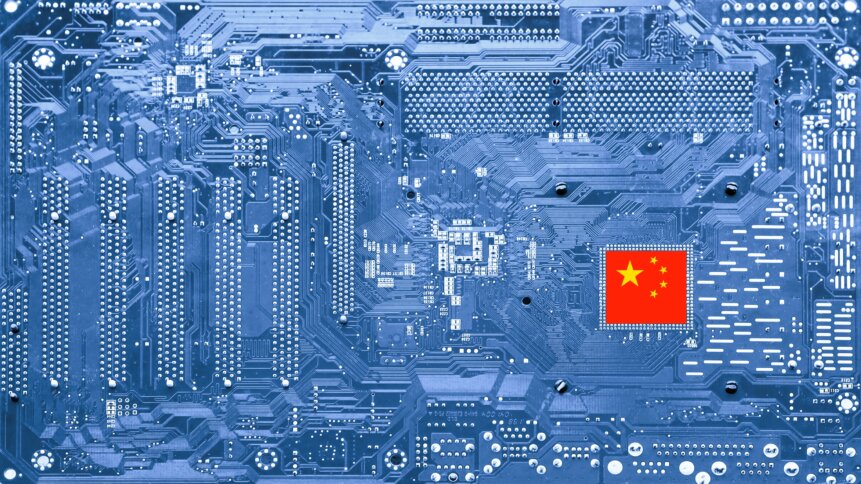Taiwan may hold lead in chip manufacturing, but China catching up fast

- China will see its industrial area share rise to 29% by 2027, up 2% from 2023.
- Taiwan will see its share decrease from 46% in 2023 to 43% in 2027.
- The US is anticipated to make some gains, with its share of 7nm and below expected to reach 11% in 2027.
Taiwan has been at the forefront of global semiconductor manufacturing for many years, producing more than 60% of the world’s semiconductors, but recently, China is making significant strides in the industry.
As a result, according to the latest report from market research firm IDC, we can expect substantial shifts in the global semiconductor landscape. Taiwan’s share in the worldwide chip manufacturing supply chain, encompassing foundry operations and assembly and testing, is projected to decrease in the near future.
Conversely, China’s share is expected to expand, primarily due to changes in semiconductor policies and geopolitical tensions involving different governments. The report, titled The Influence of Geopolitics on Asia’s Semiconductor Supply Chain: Trends and Approaches, suggests that implementing chip regulations and semiconductor policies by various nations will be the key drivers behind the shifts in market dynamics — a shift that’ll benefit China.
Source: IDC
In the report published last week, Helen Chiang, IDC’s Asia-Pacific semiconductor research lead and Taiwan country manager, wrote, “Geopolitical shifts are fundamentally changing the semiconductor game.” She meant that chip acts and semiconductor policies have led to manufacturers being required to set “China + 1” or “Taiwan + 1” production plans.
Such an overhaul has driven a new global layout for the foundry and assembly/test industry, leading to regional development in the semiconductor industry chain. “While immediate impacts might be subtle, long-term strategies are focusing more on supply chain self-reliance, security, and control,” she said, noting that the industry operation will move from global collaborations to multi-regional competitions.
China powers ahead, nipping at market share in Taiwan
Chiang is right, considering major industry players have been making strategic moves. “In terms of foundry, TSMC, Samsung, and Intel are spearheading advanced processes in the United States, which will gradually exert influence in the foundry field. Meanwhile, even as China grapples with developing advanced processes, its mature processes have developed rapidly under the impetus of its domestic demand and national policies,” she noted.
Based on the categorization by production location, IDC thinks that the proportion of overall industrial areas in China will continue to increase, reaching 29% in 2027, an increase of 2% from 2023, while Taiwan loses 3% of its market share, down to 43% in 2027. The US will make some gains in the advanced process sector. “Its [the US’] share for 7nm and below is expected to reach 11% in 2027,” Chiang added.
IDC’s latest chip industry projection indicates that Beijing’s pursuit of self-sufficiency in high-tech industries has advanced, even in the face of efforts led by the US to reduce mainland China’s role in global technology supply chains. “Even as China grapples with the development of advanced chip manufacturing processes, its mature processes have developed rapidly,” the IDC report said, on the back of domestic demand and national policies.
The Biden administration is reportedly preparing to revise its export control regulations this month, intending to restrict China’s access to more semiconductor manufacturing equipment and address loopholes in trade restrictions related to AI chips. Simultaneously, the European Union is evaluating export control measures for critical technologies, including semiconductors and AI.
The moves by the US and Europe were triggered by China’s pursuit of technological self-sufficiency, which had recently received a boost from Huawei Technologies’ 5G-enabled Mate 60 Pro series smartphones. Because a cutting-edge processor powers those devices, it was viewed as a success against US-led tech sanctions, which included limiting access to advanced chip manufacturing equipment.
While the exact source of this state-of-the-art processor, the Kirin 9000s, remains undisclosed, it is widely speculated to have originated from Semiconductor Manufacturing International Corp, China’s largest chip foundry, based on third-party teardowns of the Huawei handset.
Adding to that, despite export controls imposed by the US, Japan, and the Netherlands, mainland China’s chip foundries are expected to increase their share of mature 12-inch wafer production capacity to 26% by 2026, up from 24% in 2022, as per a July report by the research firm TrendForce.
Assembly and test to flourish in Southeast Asia
Source: IDC
Given the influence of geopolitics, technological development, and talents in semiconductor assembly and testing, IDC highlighted that leading integrated device manufacturers (IDM) in the US and Europe have begun investing more in Southeast Asia. “Outsourced semiconductor assembly and test (OSAT) companies have begun to shift their attention from China to Southeast Asia,” the report stated.
Thus, IDC predicted that Southeast Asia, especially Malaysia and Vietnam, will make further headway in OSAT, achieving a 10% global share by 2027. Taiwan’s share will decline to 47% in the same year from 51% in 2022.










